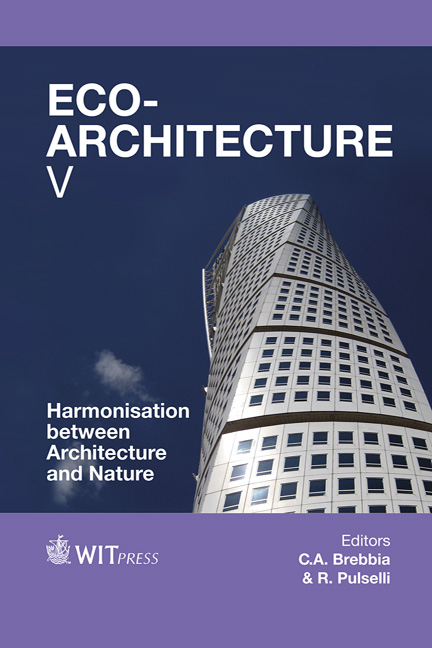Prognosis Method For The Energy Demand Of Nearly-zero-energy Buildings In Different Climates
Price
Free (open access)
Transaction
Volume
142
Pages
12
Page Range
485 - 496
Published
2014
Size
651 kb
Paper DOI
10.2495/ARC140411
Copyright
WIT Press
Author(s)
U. Dietrich, F. Kiehl, L. Stoica
Abstract
The European Directive 2010/31 claims that from 2020 on, only (nearly-) zero-energy buildings may be built. To reach this, buildings have to be optimised energetically. The remaining energy demand has to be covered by renewable energy sources (PV, geothermal etc.) gained nearby, e.g. on site. Comparable predefined plot and office building sizes are investigated for all main climate zones around the globe. Each case study leads to a different energy demand, even though, the same energy generation systems have been applied being PV for power and geothermal energy for heating and cooling. The analysis investigates first, whether the limiting factor to reach a nearly-zero-energy building is in the PV or the geothermal system. Furthermore, in all case studies, the balance between the usable floor area and the surface area for renewable energy sources (roof surface area for PV, plot size for geothermal) is investigated. From this, the maximum numbers of storeys (which can be heated/ cooled) are given per location. Furthermore, consequences for the urban pattern of nearly-zero-energy buildings (like street width and building heights) are highlighted. The main outcome is a correlation between simulated data for the energy demand and climate data. If the architectural optimization follows the local climatic needs, linear equations appear between the simulated energy demand and the climate data for a scenario of optimised buildings. The equations for annual heating or cooling demand and heating or cooling degree hours are given.
Keywords
nearly-zero-energy building, renewable energy systems, thermal building simulation, different climates, office building, building design rules





